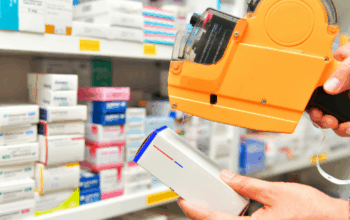Thermoplastics, an integral part of our daily lives, have revolutionized industries from packaging to aerospace. Due to their unique properties like high recyclability, resistance to chemicals, and flexibility, these polymers have provided versatile solutions to a myriad of applications.
This blog post will delve into five key areas where thermoplastics have made significant strides, showcasing their versatility and crucial role in various sectors.
Packaging: The Everyday Hero
The packaging industry is probably the most visible user of thermoplastics. Thermoplastics such as polyethylene, polypropylene, and polystyrene are utilized extensively due to their lightweight, durability, and ability to protect products from moisture, heat, and bacteria. These materials have revolutionized food packaging, allowing for extended shelf lives and safer consumption.
Additionally, their high recyclability aligns with the growing emphasis on sustainability, enabling a circular economy where packaging materials are continually reused and recycled.
Automotive: Lighter And More Efficient
Thermoplastics have been instrumental in the automotive industry’s evolution, especially in the pursuit of fuel efficiency. As the industry strives to reduce vehicle weight, thermoplastics have emerged as the ideal solution due to their high strength-to-weight ratio. Components such as bumpers, dashboards, and fuel tanks are now commonly made of these materials.
Furthermore, their resistance to corrosion and chemicals prolongs vehicle lifespan, making thermoplastics a cost-effective, sustainable choice for automakers.
Healthcare: Enhancing Patient Care
In the healthcare sector, thermoplastics have improved patient care quality and safety. Their sterilizability and biocompatibility make them ideal for a wide range of medical devices, from syringes to prosthetics.
Polyvinyl chloride (PVC), for instance, is used extensively in blood bags and IV tubing. In the realm of prosthetics, thermoplastics like polyethylene offer the perfect blend of strength, durability, and flexibility, improving patient comfort and mobility.
Construction: Building A Sustainable Future
Thermoplastics have become a cornerstone in modern construction, offering eco-friendly solutions without compromising structural integrity. Their insulation properties have led to their use in window frames and doors, significantly reducing energy consumption in buildings.
Additionally, pipes and roofing materials made of thermoplastics resist corrosion, ensuring longevity. The recyclability of these materials also means less construction waste, contributing to a greener building industry.
Aerospace: Soaring To New Heights
Finally, the aerospace industry has been transformed by the introduction of thermoplastics. These polymers have helped reduce aircraft weight, increase fuel efficiency, and enhance safety. Thermoplastics such as PEEK and PEI can withstand extreme temperatures and resist corrosion, making them ideal for various aircraft parts, including interior components and engine parts.
Additionally, thermoplastics’ inherent flame retardancy is a crucial safety feature in an industry where fire resistance is paramount.
Conclusion
Thermoplastics, with their versatility and unique properties, have proven to be a game-changer across various sectors. Whether it’s preserving our food, making our cars lighter, improving patient care, building sustainable homes, or enabling safer flights, thermoplastics play a crucial role in our lives. As we strive towards a more sustainable and efficient future, the role of thermoplastics is set to grow even further. The exploration of their applications is by no means exhaustive, and we can look forward to more innovative uses of these remarkable materials in the years to come.













